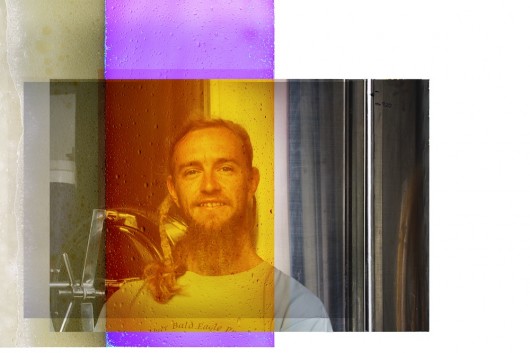HOP GOBLIN
Happy Goblin Brewery:
www.happygoblin.com.au
Story & Image: Jen Temm
Happy Goblin Brewery is as micro as it gets. Operating out of a 90sqm shared premises in Sydney’s north, the tiny brewery produces about 500L every three weeks – that’s about 1200 bottles and a couple of kegs, or enough to supply a handful of Sydney bottle shops and restaurants.
But easy-going proprietor Colin Larter is content to service a niche market with a small range of old-school pale ales and has no intention of taking on larger competitors.
“I’ve always got interest because I’m just a small brand and people want that, it’s different,” he explains. “There’s no other small brewery anywhere that makes a just makes a dead simple beer: nothing fancy, nothing trendy.”
HOPPY HOBBY
Larter studied chemistry at Sydney Uni and became interested in brewing during his honours year in agricultural chemistry. He started at home — “purely for drinking purposes” — making five-litre batches in his parents’ kitchen and eventually upscaling to about 60 litres in the garage.
“I’d read about brewing and did a few assignments on brewing enzymes,” he says. “I didn’t want to be a chemist by the end of it, I just wasn’t interested, so I started to brew more and more.”
He started brewing commercially in 2006 after spending a year applying for licenses and approvals, finding a premises and getting it up to standard. “My initial costs were about $35,000 but I was living at home, I had a part-time job and I had a little bit of money so I didn’t have to get finance – I could afford to start unfeasibly small. I literally took my system from the garage and tweaked it a little bit, made it a bit bigger and went from doing 40 or 60-litre brews to about 80 litres. There’s no way you could even pay the rent with that but I still had a part-time job and there was no pressure on me at all.”
BEYOND THE PALE
Larter began with English-style pale ale and has stuck to it, adding only dark and strong varieties. Everything is done by hand right through to the bottling – he’ll spend up to eight hours at a time pouring his beer into bottles – and labelling. It takes a couple of days a week and means he can carry on his part-time day job as a climbing instructor.
“It’s not the fashion at the moment and wasn’t the fashion at the time but every bugger and his dog makes American-style pales and uses triple IPAs. I didn’t really feel like trying to compete and trying to be the next best thing.
“Everyone else wants to be the next craziest beer, stronger than the last one with the newest hops, but it means you always have to be thinking of something new if you want that crazy craft beer scene.”
TAPPING THE MARKET
His initially marketing approach was as simple as walking into local bottle shops with a case of beer, and attending the occasional beer festival.
“I didn’t realise you only really have to take them two bottles — I had heaps of beer and no one to sell it to! It was really just one shop at a time. To start with there were so few places that would even consider you — back in 2006 very few shops would entertain the idea of having something that wasn’t from Tooheys or one of the big distributors, so you really just had to go to the handful of shops that were interested.”
Growing interest in micro-brewing over recent years and more consumer awareness about the provenance of some of the so-called craft brands like Lion-owned James Squire and Little Creatures has boosted interest in hand-crafted beers and means he now regularly turns down would-be customers.
“People just get sick of big flavourless beer companies making big flavourless beers,” he says. “As everything gets bigger and bigger people want something special.”

